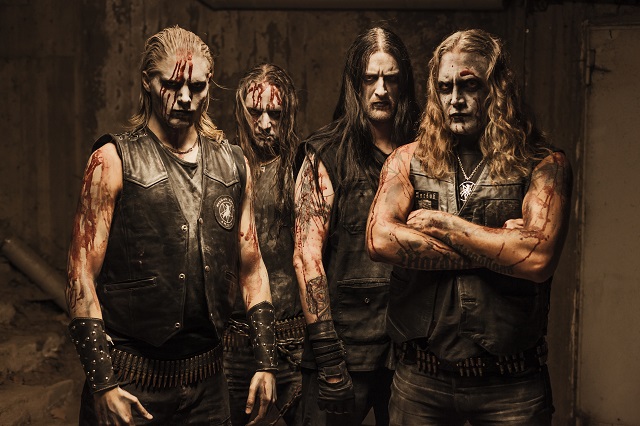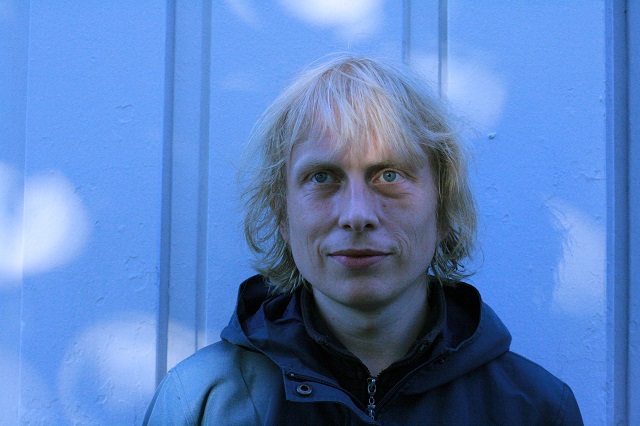Satyricon Talk Reissue of Seminal Albums ‘Dark Medieval Times’ and ‘The Shadowthrone’
The stalwart Norwegian band’s drummer Frost on “trying to take the whole black metal genre forward”
Norwegian black metal band Satyricon's Satyr and Frost (from left to right). Photos: Courtesy of Napalm Records
As far as landmark black metal albums go, Satyricon’s 1993 record Dark Medieval Times and 1994’s follow-up The Shadowthrone were important first steps in pushing the (largely) Norwegian movement forward. Over a phone call, the band’s drummer Frost aka Kjetil-Vidar Haraldstad says in a straightforward manner that the reissue of the remixed, remastered versions of these two works via Napalm Records has “forced” them to think back to nearly 30 years ago.
The drummer says, “We’re a very forward leaning band […] I find it very difficult to come up with any kind of intriguing stories connected to the album.” Nevertheless, he allows himself to get a bit nostalgic, thinking about the atmosphere in his room when he was recording one of the most horrific, yet cathartic black metal albums out there.
While Satyricon have previously dug into their vaults and re-released seminal works like 1996’s Nemesis Divina in 2016 and had deluxe editions, this was different. Founder, vocalist and principal songwriter Satyr has previously noted that making improvements on Dark Medieval Times and The Shadowthrone were difficult because the original master tapes were not really “intact.” Frost adds, “We could only remaster the old albums with the sound and the EQ that’s already there.” Nevertheless, the band prevailed and found their way forward. “The main goal was to add a little bit of depth, give it more bass frequencies, and a little more tone,” Frost says.
The infernal new reissues tick all those boxes to those who may have heard this album all their lives or even to recent black metal hitchhikers, traversing frigid, ominous sonic terrains of Satyricon. In an interview with Rolling Stone India, Frost talks about the early Nineties and pushing black metal, designing the logo for the band and iconography and their India tour at erstwhile festival series Great Indian Rock in 2008. Excerpts:
How did you think this music was going to be received when you released it nearly 30 years ago?
That’s a bit difficult to remember. When we recorded Dark Medieval Times, it was so special to us, because recording a full-length studio album was our dream. Making that common reality was a larger than life moment. At that time, I believe that the only thing that truly mattered to us was actually making the release happen. How it would be received by an audience, that didn’t really matter that much to us.
It wasn’t so that we didn’t really care about the reception, but we didn’t think about… you know, sales figures or earning money or any such artificial thing. The only thing that really mattered to us was that the album would be the very best that it could be, and that it sounded like something that we ourselves could be satisfied with and proud of.
By the time they came to The Shadowthrone, which was actually recorded just some months later, we had already matured a lot as a band. We also knew a little about where we were standing because Dark Medieval Times took us to a place somewhere among the more high profile black metal bands. That also made us understand that we had some sort of responsibility not only to ourselves, but to the genre that we had such a passion for.
One of the things mentioned online is that you had designed the album logos – can you tell me a bit about that?
Yeah that’s true. I was drawing quite a bit back in the days, I wasn’t a really skilled drawer at all, but I liked to draw a little and I had certain ideas. Iconography was really an interest of mine. To me that has always been very tightly connected to the music that we do.
In many ways, I’m still very interested in that. I don’t draw that much anymore. I don’t find myself having the time for it. You know, whenever I would feel that there is time for me to sit down and draw, I’d rather go and rehearse, because that’s even more important. [laughs]
But yeah, in the early Nineties, I did a bit of both. I’ve always connected to quite a bit of bands like Celtic Frost and bands of the Eighties. We got a little used to pairing music with symbolism and iconography. And that was something that appealed a lot to me, it kind of made a lot of sense. That’s how it was when I was a kid and that’s how it still is when I’m a grown up man. I like to have strong visual pictures in my head and very often those are our symbols and icons. I started to get interested in doing a little bit of drawing myself in the same way that I wanted to connect with music by playing drums, which is the most physical instrument. I also wanted to feel the energy of these symbols and these items that I connected spiritually with the music.
Satyricon always wanted to take black metal away from all the softer, gothic elements. Do you feel like that remains a constant guiding factor even today?
Well, that is still valid, but there’s so much more than that. Satyricon is about creating art. Satyricon is about evolution. It’s about spirit. It’s about learning and improving and searching new territories. With the danger of sounding a bit pretentious, it’s also about trying to take the whole black metal genre forward with what we do, because we really have a passion for genre and as one of the spearheading bands, we also have a certain responsibility when it comes to the legacy of this genre.
For us, it’s very important to keep the genre alive and that means breathing new life into it constantly, just like you keep a fire burning. You need to bring some oxygen into it. And that means that things cannot stand still. You have to search for new types of expression that fit into that black metal world, and you have to constantly try to bring something new. That’s really what we do as Satyricon. It’s our life’s work and a very big task indeed.
You were in India in 2008. What was that trip like for you?
That was one of those experiences that we’ve had only one of. We didn’t really know what to expect from India, because not only is it a country very far away from our own, it was also very different than our own in so many senses. I think that not that many black metal bands tour in India.
We didn’t know what kind of fanbase we would have. So our feeling was that Satyricon would probably be rather unknown in India. I know we would have perhaps some rather small but dedicated crowds; that was what we were hoping for.
But on the other hand, it felt a little bit exotic and something new. Satyricon is a band that can certainly appreciate something that’s exotic and new. That keeps us a little alert and away from routine. So we were very up for going there. To our surprise, we had pretty large crowds in New Delhi and Mumbai, and in Bangalore as well. I mean, there were thousands of people. So many people were shouting our lyrics both from old and new albums. So that came as a big surprise to us.
How are the album plans coming along for 2022?
2022 certainly going to be a very happening year, probably. We will have reached the end phase of this horrible pandemic. So that means that we can go back to playing live and do things more like normal again. We certainly look forward to that. There’s gonna be a new release, it’s gonna be a new album. We will probably tour with that album as well.
We have things in line that are going to be rather spectacular. I don’t dare to reveal too much of that right now. It hasn’t happened yet and it’s pretty far away in time. So in case something should come up and it doesn’t happen, then I don’t want to disappoint lots of people. [laughs]
The only thing I would like to say at this point is that we’re gonna embark on some new adventures and do things that we haven’t really done before, which is very much in the Satyricon spirit of doing things.







